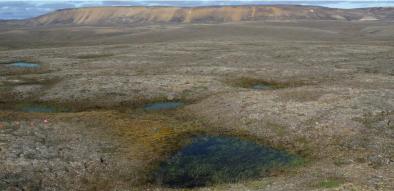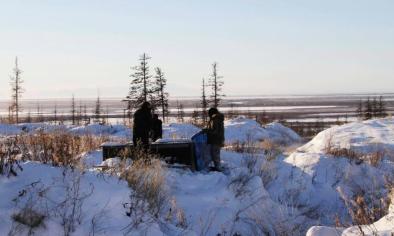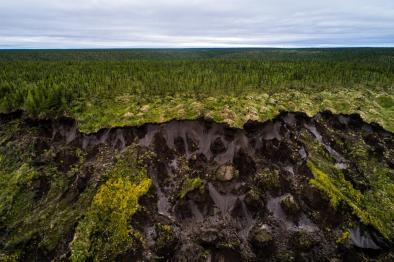Science Source
Permafrost thaw and soil moisture driving CO2 and CH4 release from upland tundra
- States as permafrost degrades, the amount of organic soil carbon (C) that thaws during the growing season will increase, but decomposition may be limited by saturated soil conditions common in high-latitude ecosystems
- States in some areas, soil drying is expected to accompany permafrost thaw as a result of increased water drainage, which may enhance C release to the atmosphere
- Examines the effects of ecosystem warming, permafrost thaw, and soil moisture changes on C balance in an upland tundra ecosystem
- Communicates results of research at a water table drawdown experiment, established in 2011 and located within the Carbon in Permafrost Experimental Heating Research project, an ecosystem warming and permafrost thawing experiment in Alaska
- Finds that, during the 3 year experiment, warming and drying increased cumulative growing season ecosystem respiration by ~20%
- Finds that warming caused an almost twofold increase in decomposition of a common substrate in surface soil (0–10 cm) across all years, and drying caused a twofold increase in decomposition (0–20 cm) relative to control after 3 years of drying
- Finds that decomposition of older C increased in the dried and in the combined warmed + dried plots based on soil pore space 14CO2
- Finds that although upland tundra systems have been considered CH4 sinks, warming and ground thaw significantly increased CH4 emission rates
- Finds that water table depth was positively correlated with monthly respiration and negatively correlated with CH4emission rates
- Results demonstrate that warming and drying may increase loss of old permafrost C from tundra ecosystems, but the form and magnitude of C released to the atmosphere will be driven by changes in soil moisture
Related Content
Headline

Jun 19, 2019 | Reuters
Scientists amazed as Canadian permafrost thaws 70 years early
Science Source
Permafrost is warming at a global scale
Boris K. Biskaborn, Sharon L. Smith, Jeannette Noetzli et al
Headline

Jan 17, 2019 | Washington Post via AP
World’s permafrost gets warmer; Siberia rises the most
Headline

Aug 21, 2018 | National Geographic
Exclusive: Some Arctic Ground No Longer Freezing—Even in Winter


